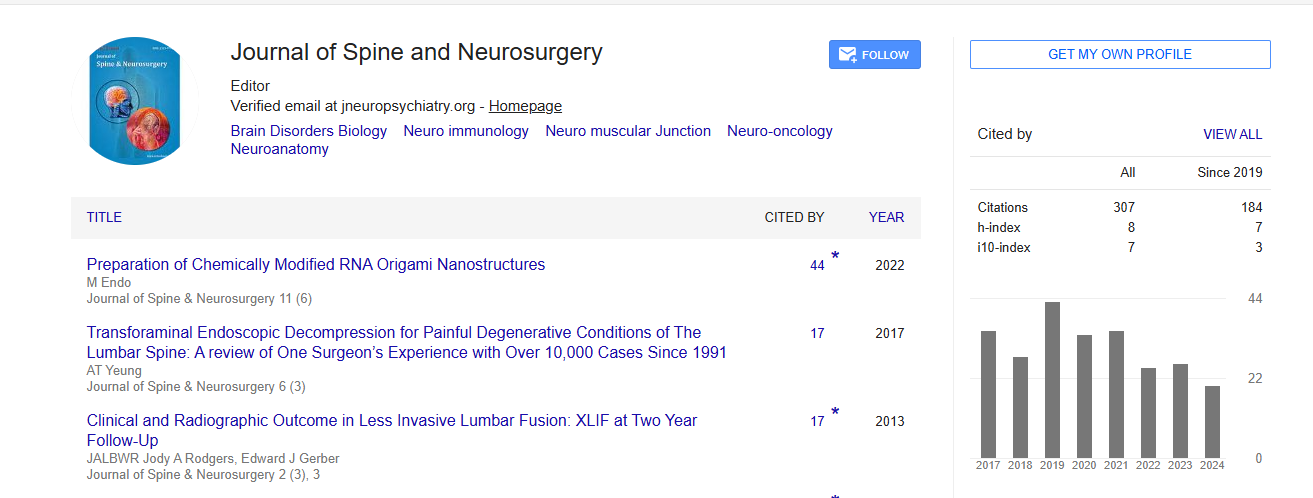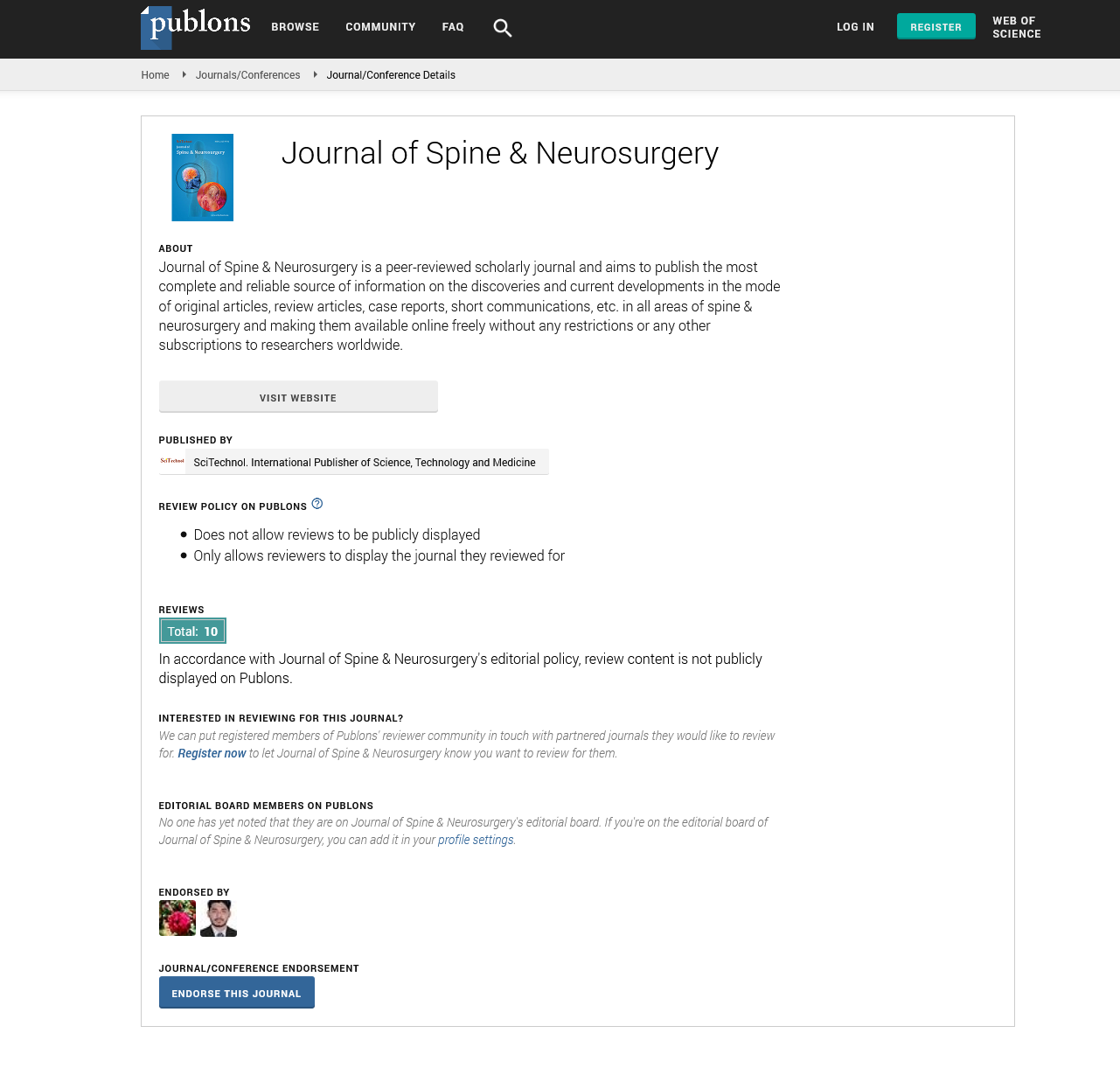Interobserver reproducibility assessment of the new AOSPINE classification for Subaxial Cervical Lesions
Leandro Vinícius Vital, Rogerio Lucio Chaves de Resende, Jefferson Soares Leal, Renato de Melo
Guimaraes and Angelo Ribeiro Vaz de Faria
Universidade Federal de Minas Gerais, Brazil
Biocor Instituto, Brazil
: J Spine Neurosurg
Abstract
Statement of the Problem: The most recent classification of subaxial cervical injuries is that of the AOSpine group, which seeks to be comprehensive and include various types of subaxial cervical spine bone and soft tissue injuries, based on the AOSpine classification for thoracolumbar fractures. Earlier classifications for subaxial cervical lesions, such as that of Allen and Fergunson and more recently the SLICS classification, do not present adequate interobserver concordance and leave a lot to be desired in assisting with therapeutic decisions. Bearing in mind that the subaxial cervical spine is the most common location for cervical injuries, accounting for 65% of cervical fractures and more than 75% of cervical fracture-dislocations, which are a serious public health problem. A classification with good concordance among surgeons is needed to optimize the treatment of these injuries. Objective: To evaluate the interobserver concordance of the most recent subaxial injury classification (AOSpine). Methodology & Theoretical Orientation: A descriptive study, which11 traumatic lesions of the subaxial cervical spine (through radiographic and tomographic images), were evaluated by 16 observers being: 6 senior surgeons, 4 fellows in spinal surgery, and 6 physician residents in Orthopedics and Traumatology by the new AOSpine classification, with subsequent statistical analysis of the results. An agreement analysis was performed using the Kappa coefficient; both individually and in combination, with an interpretation of the index performed using the standardized model for Landis and Koch. To determine the level of significance of the analysis, values less than 0.05 were considered statistically significant. Conclusion & Significance: The results of the study indicate an intermediate agreement of the new AOSpine classification for subaxial cervical lesion and point to the need to carry out studies that seek to evaluate this new classification to better evaluate its strengths and weaknesses, contributing to its improvement.
Biography
Leandro Vinícius Vital has expertise in evaluation and passion in Spine Surgery. Graduate at the Universidade Federal de Juiz de Fora, Fellow in Orthopedic Surgery at Santa Casa de Santos, and Fellow in Spine Surgery at Universidade Federal de Minas Gerais. Nowadays he studies Spine Trauma and Degenerative Pathologies of the Spine.
 Spanish
Spanish  Chinese
Chinese  Russian
Russian  German
German  French
French  Japanese
Japanese  Portuguese
Portuguese  Hindi
Hindi 
